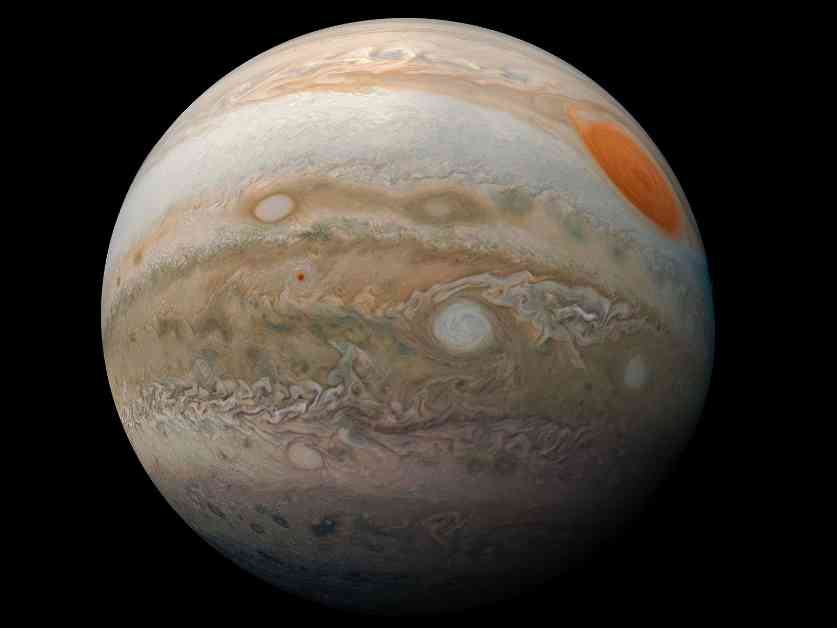Jupiter is the largest and oldest planet in our solar system. It is often the second brightest object in the night sky after Venus. Scientists have been studying this gas giant for centuries, with Galileo Galilei being one of the first to observe Jupiter through a telescope in 1610. He discovered four large moons orbiting the planet, which challenged the idea at the time that Earth was the center of the universe.
One of the most interesting features of Jupiter is its extreme mass, which has played a significant role in shaping the solar system’s history. Billions of years ago, Jupiter and Saturn combined their gravitational forces to hurl comets and asteroids across the solar system, leading to a period known as the Late Heavy Bombardment. This event may have created many of the craters on the moon’s surface that we see today.
In recent years, advancements in technology have allowed scientists to study Jupiter in more detail than ever before. Through missions like Juno, researchers have discovered that Jupiter has a fuzzy core, unlike other planets with sharp solid-fluid boundaries. This core consists of a mixture of heavy-element solids and gases that have been compressed by gravity.
Jupiter’s magnetic field is another fascinating aspect of the planet. Unlike Earth’s magnetic field, which is generated by swirling molten iron in the core, Jupiter’s magnetic field is powered by metallic hydrogen deep within the planet. This unique feature creates a magnetosphere that is several times larger than the sun and protects Jupiter from solar winds.
The planet’s diverse moons, such as Io, Europa, Ganymede, and Callisto, have also captured scientists’ attention. These moons are influenced by Jupiter’s gravitational field, leading to geological activity and unique features like volcanic eruptions on Io and liquid water oceans on Europa.
Jupiter’s atmosphere is composed of various compounds that give the planet its distinct coloration and weather patterns. The planet boasts powerful storms, including the iconic Great Red Spot, which has been raging for over two centuries. Lightning has also been observed in Jupiter’s upper atmosphere, fueled by liquid water and ammonia gas.
In addition to its moons, Jupiter also has a faint ring composed of debris from meteorite impacts. This ring was discovered in 1979 and has since been studied using ground telescopes and spacecraft. Events like the collision of Comet Shoemaker-Levy 9 with Jupiter in 1994 have left traces in the planet’s ring, showcasing the dynamic nature of Jupiter’s environment.
Overall, Jupiter continues to be a source of wonder and fascination for scientists and the public alike. Its unique features and extreme conditions make it a compelling subject for further study and exploration.






